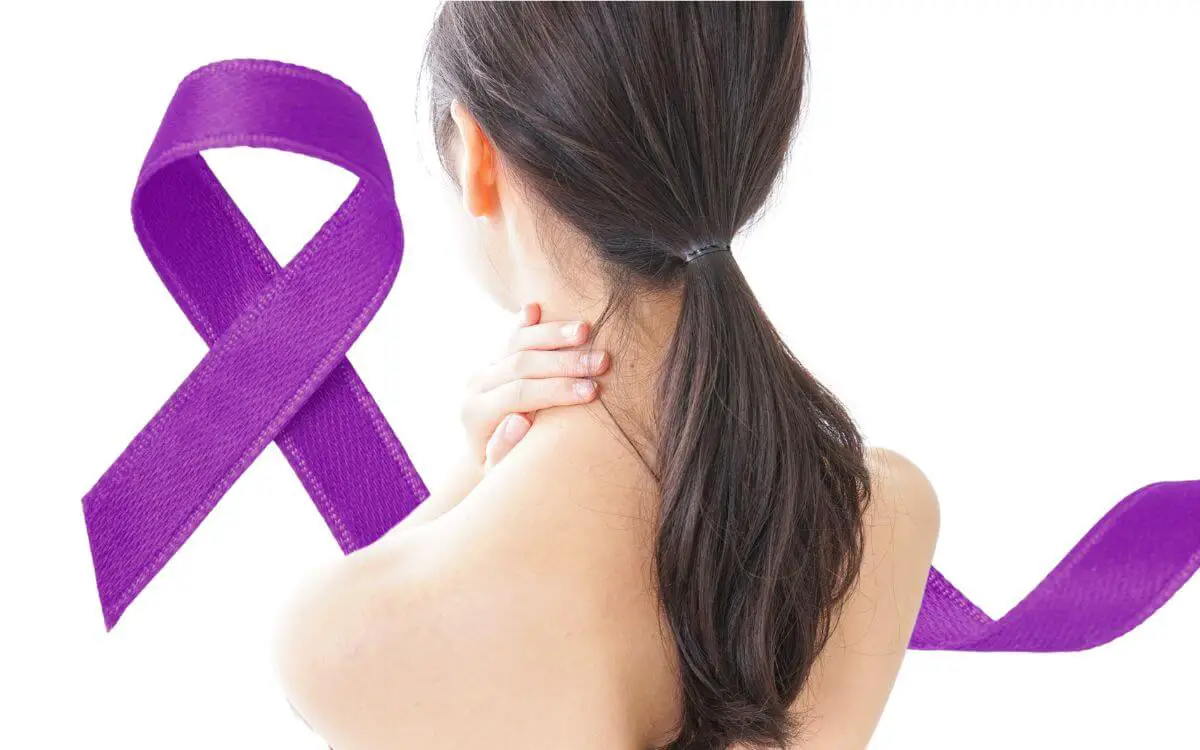What do women with fibromyalgia experience?
Since every person is unique, all women with fibromyalgia experience this disorder differently, therefore it’s important to know what you can expect. Some women report having their symptoms mild, while others find them debilitating.
Some of the most common symptoms that women with fibromyalgia experience include:
- Painful menstrual cramps
- Painful intercourse
- Pelvic pain
- Irritable bowel syndrome (IBS)
- Urinary problems
- Chronic fatigue
- Sleep problems
- Anxiety and depression
But these symptoms also belong to another condition – endometriosis. I would know, my wife has stage IV deep infiltrating endometriosis, and I’ve seen how many symptoms and pain it can cause. It can get confusing.
However, you are not here to discuss endometriosis, so let’s focus on fibromyalgia.
What is fibromyalgia?
Fibromyalgia is not an illness or disease, it’s a disorder that mainly affects women between the ages of 20 and 55. It’s a condition that’s characterized by widespread musculoskeletal pain, fatigue, and tenderness in the joints, muscles, tendons, and other soft tissues.
The exact cause of fibromyalgia is still unknown, but it’s thought to be the result of a combination of genetic and environmental factors.
What do women with fibromyalgia experience?
The pain associated with fibromyalgia can be described as a deep ache or burning sensation. The pain is often worse in the morning and can get worse with weather changes. Many women report that their pain is not alleviated by rest or pain medication.
In addition to pain, women with fibromyalgia also experience fatigue, sleep problems, brain fog, and mood swings. These symptoms can make it difficult to do everyday tasks and can have a negative impact on your quality of life.
Many women experience symptoms that are similar to those of other conditions, such as endometriosis, irritable bowel syndrome (IBS), and chronic fatigue syndrome (CFS). This can make it difficult to get an accurate diagnosis.
There are common symptoms and uncommon symptoms of fibromyalgia.
If you want to learn more about fibromyalgia, I wrote a “Fibromyalgia for Caring Partners” e-Book.
You can get the 3 First Chapters of the e-Book for FREE, and if you like it, you’ll get a Whopping 33% Discount on the Whole Book, plus discounts on other helpful tools. You have nothing to lose but a lot to gain.
These chapters alone explain how to accept the new normal, understand fibromyalgia, and the diagnosis. They include:
- The new you.
- The new her.
- The new reality.
- Introduction to fibromyalgia.
- What is fibromyalgia?
- The early days.
- When you first realize something is wrong.
- Spotting the signs that something is wrong.
- Coming to terms with a chronic illness.
- The role of partner in fibromyalgia.
- The process of getting diagnosed.
Get Your 3 FREE Chapters!
Fibromyalgia for Caring Men

Common symptoms of fibromyalgia.
Apart from typical widespread pain, other common symptoms include:
- Fatigue
- Sleep problems
- Cognitive difficulties (“fibro fog”)
- Depression
- Anxiety
- Headaches
- Irritable bowel syndrome (IBS)
- Pelvic pain
- Urinary problems
- Muscle twitches
- Numbness and tingling in the extremities
Women with fibromyalgia experience these symptoms commonly, but not all women will experience all of these symptoms.
Uncommon symptoms of fibromyalgia.
- Dizziness
- Headaches
- Ringing in the ears
- Numbness or tingling in the hands or feet
- Jaw pain
- Morning stiffness
- Weight gain or loss
- Dry eyes or mouth
These are just a few examples, but it’s important to remember that every woman experiences fibromyalgia differently.
The variety of impactful symptoms associated with fibromyalgia can make diagnosis difficult. There is no one test that can definitively diagnose fibromyalgia. Instead, doctors must rule out other conditions that could be causing your symptoms.
If you think you may have fibromyalgia, it’s important to see a rheumatologist or other doctor who is familiar with the condition. They can help you get the diagnosis and treatment you need to improve your quality of life.
What else do women with fibromyalgia experience?
Apart from the pain, women with fibromyalgia experience other symptoms, such as headaches, confusion, blurred vision, clumsiness, dizziness, fatigue, irritability, depression, anxiety, gastrointestinal issues, and menstrual cramps.
Headaches: Many women with fibromyalgia experience headaches. The pain can be mild to severe and is often worse in the morning.
Confusion: Many women with fibromyalgia report feeling “foggy” or having trouble concentrating. This is sometimes called “fibro fog.”
Blurred vision: Blurred vision is a common symptom of fibromyalgia.
Clumsiness: Women with fibromyalgia may feel clumsy or uncoordinated. This can be due to the fatigue and muscle pain associated with the condition.
Dizziness: Dizziness is a common symptom of fibromyalgia. It can be caused by fatigue or the medications used to treat the condition.
Fatigue: Fatigue is one of the most common symptoms of fibromyalgia. It can be debilitating, making it difficult to do everyday tasks.
Irritability: Many women with fibromyalgia report feeling irritable or “on edge.” This can be due to the pain, fatigue, and brain fog associated with the condition.
Depression: Depression is a common symptom of fibromyalgia. It can be caused by the pain, fatigue, and brain fog associated with the condition.
Anxiety: Anxiety is a common symptom of fibromyalgia. It can be caused by the pain, fatigue, and brain fog associated with the condition.
Gastrointestinal issues: Many women with fibromyalgia experience gastrointestinal issues, such as irritable bowel syndrome (IBS). This can be due to the pain, fatigue, and brain fog associated with the condition.
Menstrual cramps: Many women with fibromyalgia experience menstrual cramps. This can be due to the pain, fatigue, and brain fog associated with the condition.
These are just a few examples, but it’s important to remember that every woman experiences fibromyalgia differently.

Fibromyalgia diagnosis.
The variety of impactful symptoms associated with fibromyalgia can make diagnosis difficult. There is no one test that can definitively diagnose fibromyalgia. Instead, doctors must rule out other conditions that could be causing your symptoms.
If you think you may have fibromyalgia, it’s important to see a rheumatologist or other doctor who is familiar with the condition. They can help you get the diagnosis and treatment you need to improve your quality of life.
On average, to get diagnosed with fibromyalgia takes five years and seeing three different doctors. This is because there is no one test that can diagnose fibromyalgia and many of the symptoms overlap with other conditions.
To diagnose fibromyalgia, your doctor will likely do a physical exam, order blood tests, and ask you about your medical history and symptoms. They may also refer you to a pain specialist or other specialists to rule out other conditions.
Female fibromyalgia vs male fibromyalgia.
What is the difference between female fibromyalgia and male fibromyalgia?
The main difference is that women with fibromyalgia tend to experience more symptoms than men. For example, women are more likely to experience pain during intercourse, pelvic, and irritable bowel syndrome (IBS).
However, it’s important to note that men can also experience these symptoms. And while the exact cause of fibromyalgia is unknown, there are some risk factors that are more common in women, such as:
- having a family member with the condition
- experiencing trauma or abuse
- having another chronic health condition, such as endometriosis, lupus, or rheumatoid arthritis
Why do women experience worse symptoms of fibromyalgia than men?
This question is still being researched, but there are a few theories:
Hormonal differences: Women have lower levels of the hormone serotonin, which is thought to play a role in pain perception.
Brain differences: Women have a higher density of pain receptors in the brain and a lower threshold for pain. This means that they are more sensitive to pain than men.
Stress: Women tend to experience more stress than men, both in their everyday lives and in response to trauma or illness. Stress can trigger or worsen fibromyalgia symptoms.
It’s important to remember that every woman experiences fibromyalgia differently, and there is no “right” way to have the condition. Some women may have mild symptoms that don’t significantly impact their lives, while others may have severe symptoms that make it difficult to do everyday tasks.
Do women with fibromyalgia experience more symptoms during their menstrual cycle?
There is evidence to suggest that women with fibromyalgia experience more symptoms during their menstrual cycle. One study showed that 89% of women with fibromyalgia reported an increase in pain during the premenstrual phase, and 71% reported an increase in fatigue.
Other common symptoms include brain fog, anxiety, and depression. These symptoms can make it difficult for women with fibromyalgia to function on a day-to-day basis.
If you’re a woman with fibromyalgia, it’s important to talk to your doctor about your symptoms and how they vary throughout your menstrual cycle. There are treatments available that can help relieve your symptoms and make it easier to cope with fibromyalgia.
What is the difference between fibromyalgia pelvic pain and endometriosis?
The difference between fibromyalgia pelvic pain and endometriosis is that endometriosis is a chronic condition that causes tissue similar to the lining of the uterus to grow outside of the uterus. This can cause pain, heavy bleeding, and other symptoms.
Fibromyalgia is a chronic condition that causes widespread pain and other symptoms.
The difference is that endometriosis can be physically and visually proven whereas fibromyalgia cannot. Endometriosis is on the surface an invisible illness but it can be extracted from the body during laparoscopy, and the biopsy can prove it.
Fibromyalgia is a disorder, which means that there is no medical evidence for its existence, yet the symptoms are very much real.
Pelvic pain during fibromyalgia flare-ups can be caused by trigger points, which are areas of muscle tension. These trigger points can be found in the pelvic floor muscles, as well as the muscles of the hips and thighs.
Endometriosis pain is caused by the growth of endometrial tissue outside of the uterus. This can cause the tissue to grow on the ovaries, fallopian tubes, and other areas in the pelvis. This pain is often sharp and feels like stabbing, or like the insides are being pulled out.
Endometriosis is more common in women with fibromyalgia, and it is thought that the two conditions may share some risk factors. However, it is not clear if endometriosis causes fibromyalgia or if the reverse is true.
If you experience pelvic pain, it’s important to see a doctor so they can rule out other conditions, such as endometriosis or ovarian cysts. Once other conditions have been ruled out, your doctor can help you manage your fibromyalgia symptoms.
Fibromyalgia and romantic relationships.
If you are a woman with fibromyalgia, it’s important to understand that you are not alone. There are many resources available to help you manage your symptoms and live a full life. Don’t hesitate to reach out for help when you need it.
One of the best sources of support is your romantic partner. Being understanding and supportive can make a world of difference.
It can be incredibly hard to maintain a romantic relationship when you’re dealing with chronic pain and other symptoms of fibromyalgia. However, it is possible.
Here are a few tips:
- Be patient with yourself and your partner. Understanding and patience are key.
- Communicate openly and honestly about your needs and limitations.
- Seek out professional help if needed. Couples therapy can be very helpful for couples dealing with chronic illnesses.
- Make time for self-care. This is essential for managing your symptoms and taking care of yourself.
If you are in a romantic relationship, it’s important to talk to your partner about your needs and limitations. Chronic pain can be unpredictable and flare-ups can happen at any time. Being open and honest about your needs will help your partner understand and be more supportive.
There may be times when you need to take a step back from your relationship in order to focus on self-care. This is OK. Putting yourself first is not selfish, it’s necessary. Don’t hesitate to reach out for help when you need it.
There are many resources available to women with fibromyalgia. Here are a few:
- The National Fibromyalgia Association
- The American College of Rheumatology
- Fibro Women’s Health
- Mayo Clinic
- WebMD
And as always, you can get my fibromyalgia eBook to learn how to best support your fibromyalgia girlfriend or wife.
Get Your 3 FREE Chapters!
Fibromyalgia for Caring Men

Concluding experiences of women with fibromyalgia.
The experiences of women with fibromyalgia can be extremely varied. Some women may only experience mild symptoms, while others may deal with debilitating pain and fatigue on a daily basis.
There is no one-size-fits-all approach to managing fibromyalgia, but there are many resources available to help you cope with your symptoms. Don’t hesitate to reach out for help when you need it.
Living with fibromyalgia can be tough, but you don’t have to do it alone. There are many people and resources available to support you.
Your partner or spouse can be the best source of support. Be open and honest about your needs and limitations. Seek out professional help if needed. And make time for self-care. This is essential for managing your symptoms and taking care of yourself.
There are many resources available to women with fibromyalgia. The National Fibromyalgia Association, The American College of Rheumatology, Fibro Women’s Health, Mayo Clinic, and WebMD are just a few.
If you are a woman with fibromyalgia, know that you are not alone. There is help and support available. You can live a full and fulfilling life despite your chronic illness. Don’t hesitate to reach out for help when you need it.


About Me
Hi, I’m Lucjan! The reason why I decided to create this blog was my beautiful wife, who experienced a lot of pain in life, but also the lack of information about endometriosis and fibromyalgia for men…
